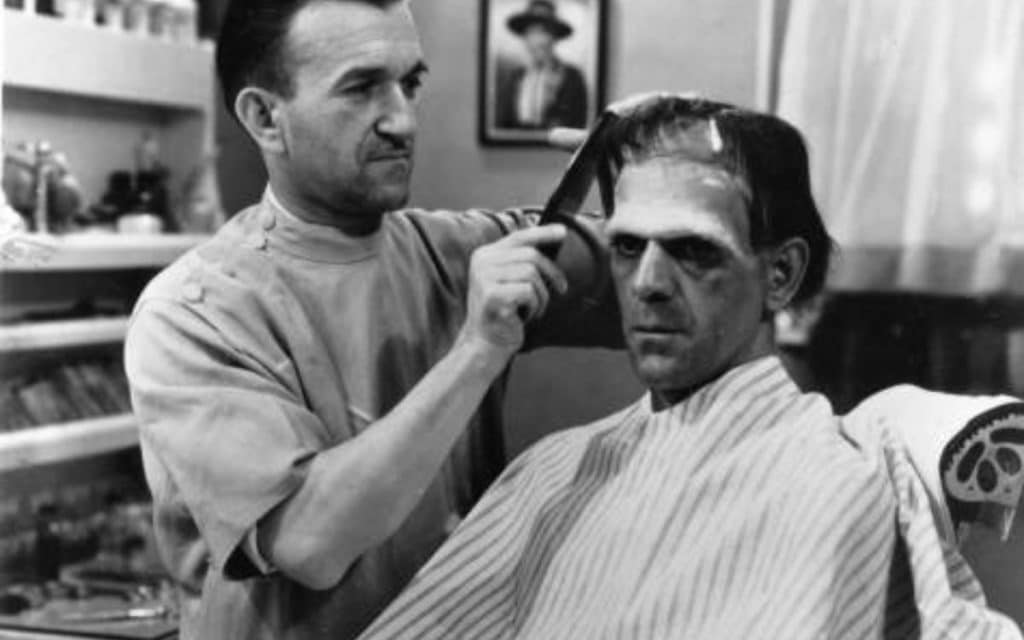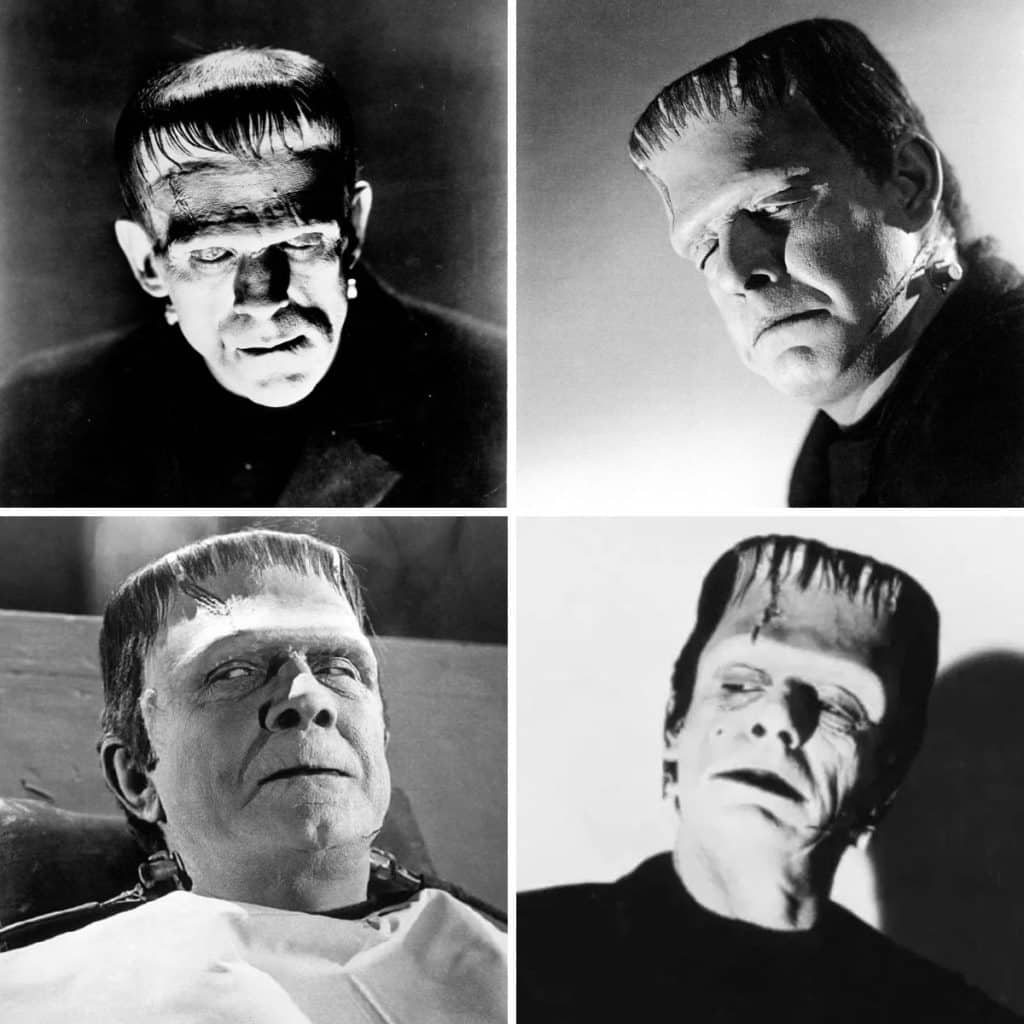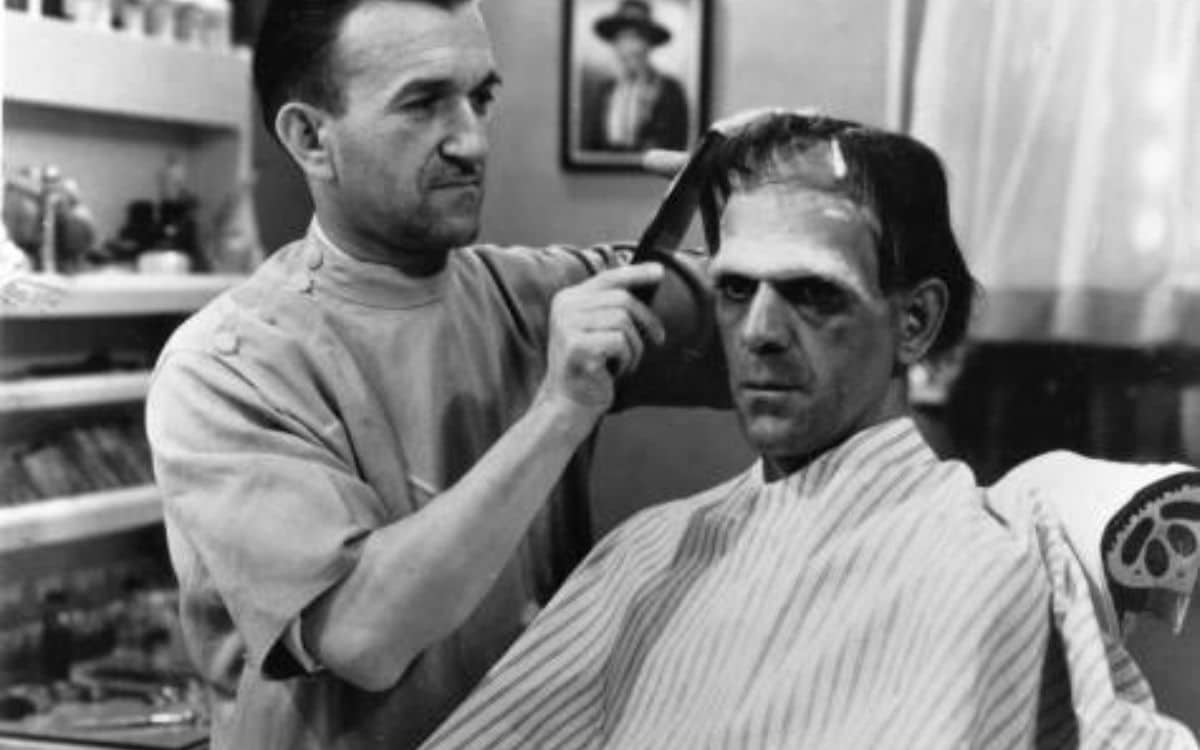Jack Pierce’s legendary make-up artistry transformed Frankenstein’s Monster from a literary figure into one of cinema’s most iconic images
When most people picture Frankenstein’s Monster, they imagine a towering figure with a flat head, bolts in his neck, and greenish skin. But none of that comes from Mary Shelley’s 1818 novel. Instead, it’s pure Hollywood magic – and the man who gave the Monster his world-famous face was Jack Pierce, the brilliant makeup artist whose imagination forever changed how we see Frankenstein’s Monster.
Frankenstein before Universal Studios
Long before Universal Studios’ Frankenstein terrified audiences, filmmakers had already tried to bring the monster to the screen. The very first known film adaptation was produced in 1910 by Thomas Edison’s film studio. In that silent short, the creature looked nothing like the version we know today.
Instead, he appeared wild and demonic, with frizzy hair and a twisted, theatrical appearance—more like a villain from a Victorian stage play than a surgically stitched corpse.
Yet these early experiments quickly faded into obscurity. No one had managed to create a monster design that stuck in people’s minds. That changed forever in 1931, when Universal Studios released Frankenstein and Jack Pierce stepped in to redefine horror history.

Who Was Jack Pierce?
Jack P. Pierce – born Janus Piccoulas in Greece in 1889 – immigrated to America as a young man. He bounced through various jobs, including minor acting roles, baseball, and theatre management. But his true genius was in transformation.
By the 1920s, Pierce had joined Universal Pictures, right as the studio was becoming known for its Universal Monsters. He was intense, meticulous, and utterly dedicated to his craft. Working without modern prosthetics or digital effects, Pierce relied on cotton, collodion, rubber, spirit gum, and greasepaint to turn actors into creatures that felt disturbingly real.
How Jack Pierce Created Boris Karloff’s Frankenstein Monster
When Universal decided to film Frankenstein, Pierce seized the opportunity to create a look no one had ever seen. He imagined the creature as a patchwork of corpses, surgically altered and brought to life by electricity. His design gave the Monster a flat-topped skull, symbolizing a surgical operation to house an oversized brain, and bolts in the neck to suggest electrical circuits coursing through the body—a look that became the hallmark of the Boris Karloff Frankenstein makeup.
Heavy eyelids, deep scars, sunken cheeks, and a towering frame completed the terrifying image. One of Pierce’s most clever tricks involved Boris Karloff’s own dental bridge. Karloff typically wore a dental plate that filled out his face. For the Monster, he removed it, leaving one cheek hollow and gaunt. That natural hollow helped give the Monster a skeletal, haunted look. Combined with meticulous sculpting and layers of makeup, Karloff’s Frankenstein makeup took up to four hours each day—a gruelling process that became legendary in film history.
Flat Head, Bolts, and the Birth of an Icon
The choice to give Frankenstein’s Monster a flat head has become one of Hollywood’s most enduring visual legacies. Fans often wonder: “Why does Frankenstein’s Monster have a flat head?” or “Why does Frankenstein’s Monster have bolts in his neck?” Jack Pierce’s answer was pure visual storytelling—his monster wasn’t simply a man, but an unnatural creation of science, pieced together and animated with electricity.
Interestingly, the Monster’s supposed green skin is also a Hollywood myth. Was Frankenstein’s Monster originally green? Not at all! The greenish tint became a fixture of posters and merchandise, but Pierce actually painted Karloff’s skin a greyish hue to register properly on black-and-white film.
Pierce’s Universal Monsters Legacy
Jack Pierce’s genius wasn’t limited to Frankenstein. He also designed the Mummy’s bandage-wrapped look for Boris Karloff in The Mummy (1932) and devised elaborate techniques using yak hair and rubber appliances to transform Lon Chaney Jr into The Wolf Man (1941). His creations weren’t just monsters – they were characters filled with emotion and tragic humanity, embodying the true spirit of the Universal Monsters.

Sadly, by the late 1940s, Universal shifted toward faster, cheaper makeup methods, and Pierce’s meticulous artistry fell out of favour. He left Universal in 1947 and worked sporadically until his death in 1968. Yet modern horror fans and historians increasingly recognize him as the unsung genius behind Hollywood’s greatest monsters.
How Karloff and Others Carried Pierce’s Monster Forward
Boris Karloff played Frankenstein’s Monster in three films – Frankenstein (1931), Bride of Frankenstein (1935), and Son of Frankenstein (1939). In Bride of Frankenstein, Pierce updated the makeup to show burn scars from the previous film, giving the Monster an even more tragic appearance. By Son of Frankenstein, the creature was depicted as stiffer and less human, as Hollywood began shifting the Monster from tragic figure to enduring horror icon.
After Karloff stepped away from the role, others took over. Lon Chaney Jr donned the makeup in The Ghost of Frankenstein (1942), preserving Pierce’s design but adding bulkier features. Bela Lugosi, who famously declined the role in 1931, finally played the Monster in Frankenstein Meets the Wolf Man (1943). However, his performance was criticized as awkward and lacking Karloff’s subtle depth.
Then came Glenn Strange, who played the Monster in House of Frankenstein (1944), House of Dracula (1945), and Abbott and Costello Meet Frankenstein (1948). Strange’s version retained the flat head and bolts but increasingly became a silent, lumbering figure—a towering prop more than a nuanced character.
Over time, the Frankenstein monster’s look was simplified and exaggerated. The flat-top head, bolts, and greenish skin became default imagery for Halloween costumes, toys, cartoons, and cereal boxes. Shows like The Munsters parodied Pierce’s design, solidifying it as both horror icon and comedic figure. Gradually, Frankenstein’s Monster shifted from tragic creation to pop-culture robot.
So next time you see Frankenstein’s Monster on a mask, a movie screen, or a cereal box, remember: you’re looking at Jack Pierce’s Hollywood vision, not Mary Shelley’s original creature. Thanks to one brilliant makeup artist, a literary figure was reshaped into one of cinema’s most recognizable icons—and the Monster has never looked the same since.
Jack Pierce’s name may not be on every Halloween mask or movie poster, but his monsters—and especially his version of Frankenstein’s Monster—are faces the world will never forget.
Have you ever spotted Jack Pierce’s influence in other films or pop culture? Tell us in the comments section!



